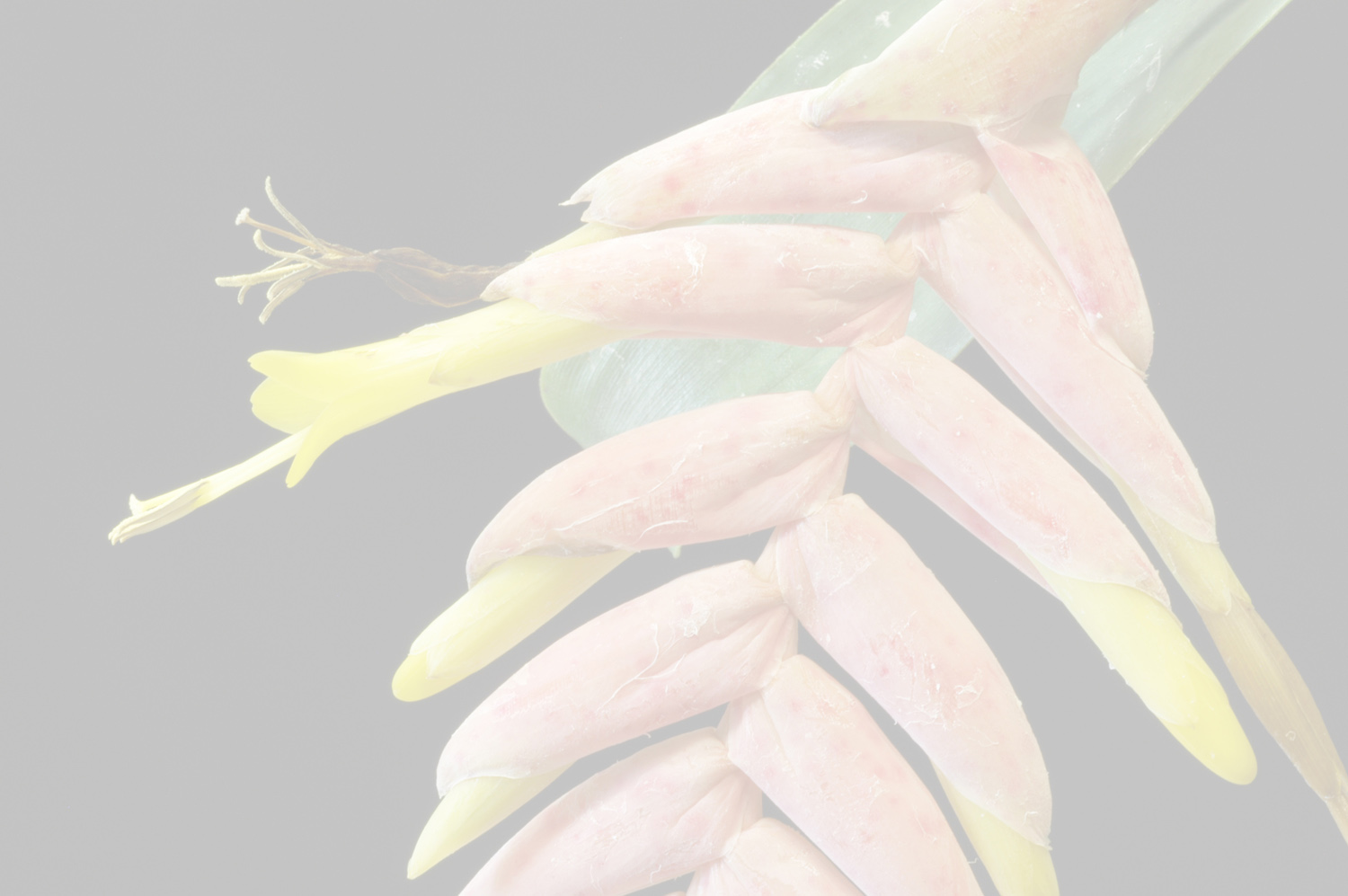


plant stemless, flowering to 60 cm high. leaves forming an erect funnel-rosette; sheath wide-oval, 7–9 cm long, 6 cm wide, indistinct from blade, both sides brown lepidote; blade ligulate, to 60 cm long, 4 cm wide, long acuminate, with hard, almost pungent tip, both sides green, underneath reddish banded or fleched ( fig; 7, left). inflorescence: peduncle bent to rising, shorter than the leaf rosette, 25–30 cm long, 5 mm thick, rounded, green, glabrous; peduncle bracts the bottom ones subfoliate, the upper ones short, with large sheath and narrow, long acuminate blade, much lomger than the internodes (fig; 7, above right); fertile part lax, few -(to 7 - ) flowered, to 20 cm long, 2,5 cm wide, with weakly geniculate, smooth, not warty or verrucose axis; floral bracts laxly distichous, at anthesis easily secund, 3–6,5 cm long; the bottom ones longer, theupper ones shorter than the flowers, long and pungent acuminate, green to reddish brown, ecarinate, nerved, glabrous. flowers: sepals shorter or as long as the floral bracts, to 3 cm long, 1 cm wide, long acuminate, ecarinate, glabrous, indistinctly nerved. flowers at anthesis about 2,5 cm long, throat 1 cm wide, with green petals. stamens and style enclosed in the flower (fig; 7, below right).Translated by Butcher (12-10-2016) from: Trop. Subtrop. Pflanzenw.. (protologue) Bromelienstudien. I.Neue und wenig bekannte Arten aus Peru und anderen Lšndern .